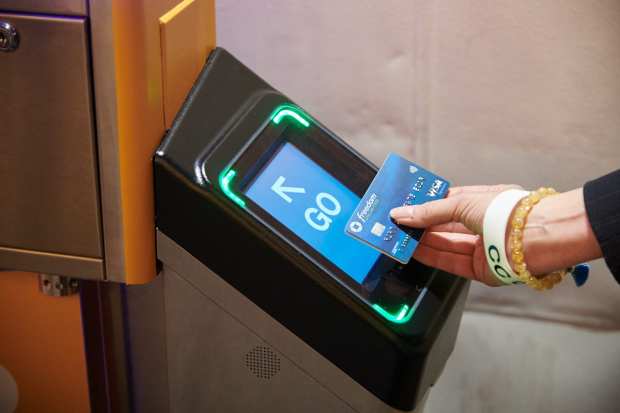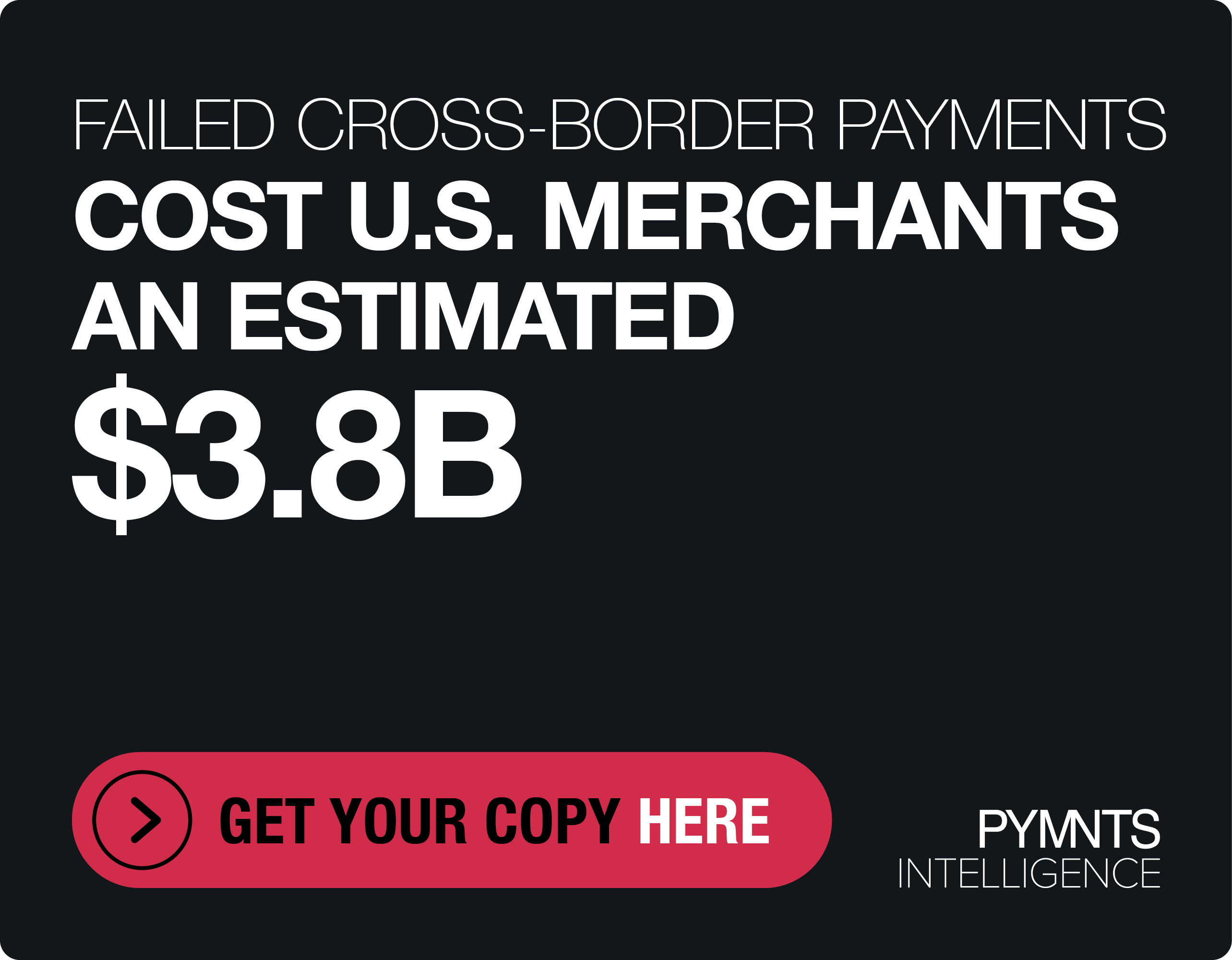Visa: US Contactless Payments Primed For A Big 2020

When Visa, Chase, New York’s Metropolitan Transportation Authority (MTA), and other industry leaders co-launched a contactless payments pilot seven months ago, they started small, and with modest goals. This “public pilot” made contactless payments available on a few train lines, and only at 16 stations, including Grand Central Station and Union Station.
A bit of caution was well warranted, as Visa’s Global Head of Contactless Payments Dan Sanford told Karen Webster in a recent discussion, given the massive size of the New York public transit system. Visa, he noted, has been working with public transit systems all over the globe for the last decade, in some of the world’s biggest cities — and its project with the MTA has dwarfed them all. In addition to being one of the world’s top-10 tourist attractions, Grand Central Terminal is the third-busiest train station in North America.
Yesterday (Dec. 11), that public pilot officially came to an end, as Penn Station was added to the New York list of MTA stations that enables open payments using network-branded contactless cards. Penn Station, situated in the heart of Manhattan, is the busiest train station in the Western Hemisphere, with roughly 600,000 passengers passing through every workday.
“We are moving beyond public pilot — this has now become a continuous rollout,” Sanford told Webster. “Penn Station is going online, and [the MTA] will enable another 50 stations this month. By June, the MTA’s goal is to have half of all New York stations enabled. By the end of 2020, all rail lines and buses will be enabled.”
It’s a big leap forward, and a consequential one, Sanford noted. Visa began this project with the idea that New York City could ignite a contactless card revolution throughout the U.S.— which has, up until now, lagged behind the rest of the world in terms of access and adoption.
Sanford said that, based on the numbers the company has seen, and as the song goes: “We’ve only just begun.”
The MTA’s Greater-Than-Expected Success
The MTA had big, yet relatively modest, expectations for contactless payments from the beginning of the public pilot. A baseline it had was something on the order of 12,000 to 15,000 taps per day. Even that, Sanford said everyone agreed, seemed rather optimistic from a standing start.
As it turns out, it wasn’t optimistic enough.
Soon after going live, the number of taps per day was more than three times the low-end expectations: 35,000 taps a day. Now, seven months later, Sanford told Webster that Visa is seeing roughly 100,000 taps per week, and more than 4 million payments by tap. That rate is clearly picking up, he noted, with the first million payments by taps taking about three months to achieve, and the last million taking only five weeks.
That, Sanford said, gives the MTA and the broader payments landscape reason to think that 2020 will be the year that contactless payments really take off — within the transit use case and well beyond.
“We’ve been doing this all over the world in our push to make open payments a reality [for transit], and the New York MTA is, by far, the largest project in terms of size and scale,” Sanford explained. “It is incredible — given the scope of the project and what is required to launch — that [the MTA] has hit these milestones on time. We have every expectation that we will achieve full enablement by the end of 2020. I can’t overstate how impressive that is.”
Transit is just the starting point, he added. The habituation of tap-and-go payments that the transportation use case creates has had notable ripple effects through the entire New York metropolitan area. Sanford said that 10 percent of card payments are now done via tap instead of dip or swipe, and half of all cards in the New York market are now contactless-enabled, with the other half of cards fully expected to be online by the end of the year.
Issuers that saw the coming of the MTA changeover read the writing on the subway station wall, and have made strong efforts to get ahead of it, and get contactless cards into consumers hands. New York is unique among markets, in that Visa has seen full-scale reissues of entire issuer card lines to make sure that a customer who wanted a contactless card would have one.
That is not the norm in the rest of the U.S. as of today, he noted. This time next year, though? He told Webster that the conversation is likely to be quite different.
A Big Year On The Horizon
“So, when is it coming to Boston?” Webster asked Sanford, half-jokingly noting that she was tired of the stutter step of buying the Charlie Card. It’s a question he gets a lot, he said, though the city in question changes. Sometimes it’s L.A., sometimes D.C., sometimes San Francisco and sometimes Chicago.
Contactless card penetration is increasing. Sanford noted that eight of the top-10 banks have started issuing them, with more on the way, and demand is picking up. Local transportation authorities know that, he added, and there is a lot of excitement about what is happening in New York. With consumers having contactless cards in their hands, comes transit authorities with more than a passing interest in riding that contactless wave.
However, as is often the case for those in the train business, getting things to adhere to an exact schedule is complicated, and the exact timing is difficult to predict. That it’s coming, at this point, is undeniable, he predicted, and it will happen faster than expected.
The goal for Visa was to get 100 million contactless cards into the market by the end of 2019. That goal has long been surpassed, and Visa is now targeting north of 300 million by the end of 2020. Where the cards are present, he noted, Visa sees usage, as well as where they get usage. Despite the much shorter time they’ve been in the market, their ignition has been much quicker — in that consumers are using them more often than their mobile contactless counterparts.
“Visa’s goal is to get a contactless device in the hand of every consumer, and we think the best way to do that is to send it to them in the mail,” he said.
Using contactless payments has a social aspect often overlooked, he added. Seeing someone tap a card and make their train, while stopping to pay causes one to miss their own train, has a powerful bolstering effect when it comes to interest — something that Webster said she even experienced in, of all places, New York. When it came time to pay for a taxi and she went to tip, the taxi driver turned around, pointed to the contactless symbol and asked why she wasn’t tapping.
Use, Sanford told Webster, begets use cases. In the not-so-distant past, taxi drivers would have been begging off consumers using any card at all. Now, they are actively pushing consumers to the “right” one. It begins with habituation on transit, he noted, and getting into the habit of tapping to pay every day as part of a commute. From there, the possibilities expand rapidly, as consumers like the transit experience, and want to have it every other place they shop.
“I think what we are now seeing in the numbers is that 2020 is going to be a year of transformation. Part of that is going to be driven by the greater availability of the technology, and I think there will also be a huge social component that will accelerate adoption far beyond what we’ve seen in 2019 [into] 2020,” he said.
